While the Pontiac Grand Prix nameplate was introduced in 1962 as a sport-oriented full size B-body, similar to the Chevy Impala SS, the car really hit its stride with a third generation redesign that launched in 1969.
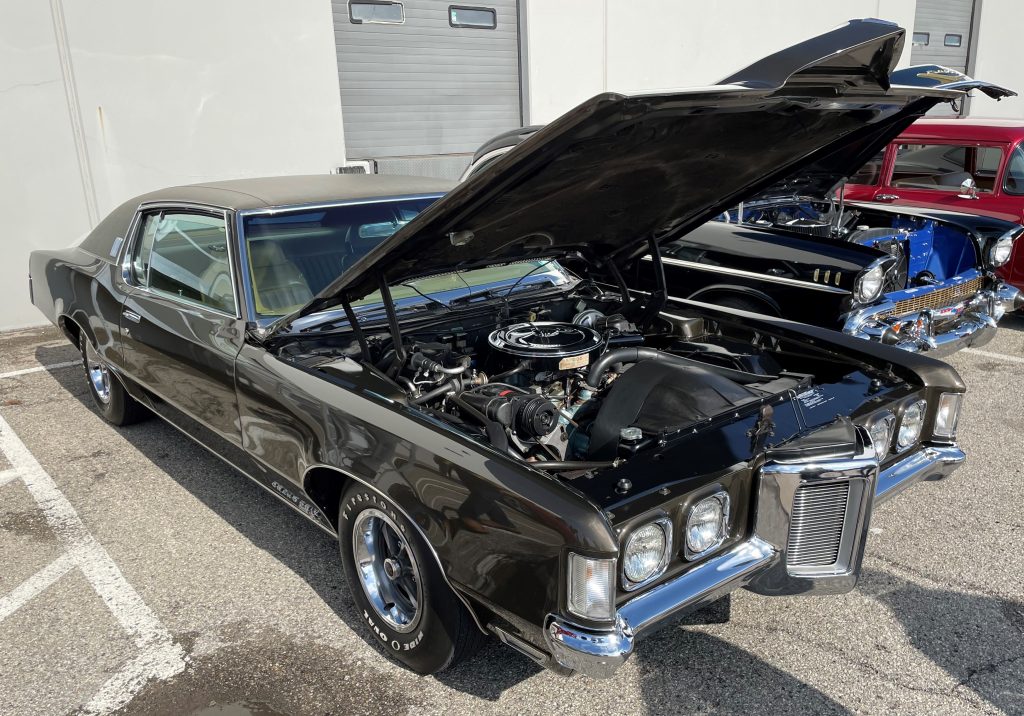
That’s because the 1969 Grand Prix rode on an all-new variation of the GM A-body chassis, rechristened the G-body, that would also underpin the Chevy Monte Carlo coming a year later. The move shifted more focus on performance as well, with standard disc brakes and a base V8, along with options like a 428ci engine and M21 Muncie four-speed.
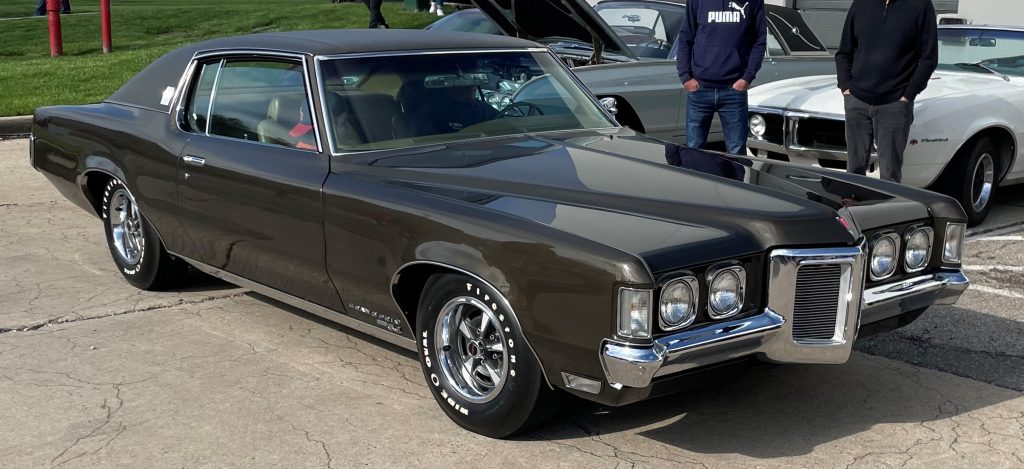
But at the top of the order sheet sat the “SJ” package, a designation supposedly pulled from the legendary Duesenberg portfolio. It automatically gave you the 428 Pontiac powerplant, a robust gauge package, and a host of upscale enhancements. (There was also a high output “SJ H.O.” model too, which we’ll talk about in a moment.)
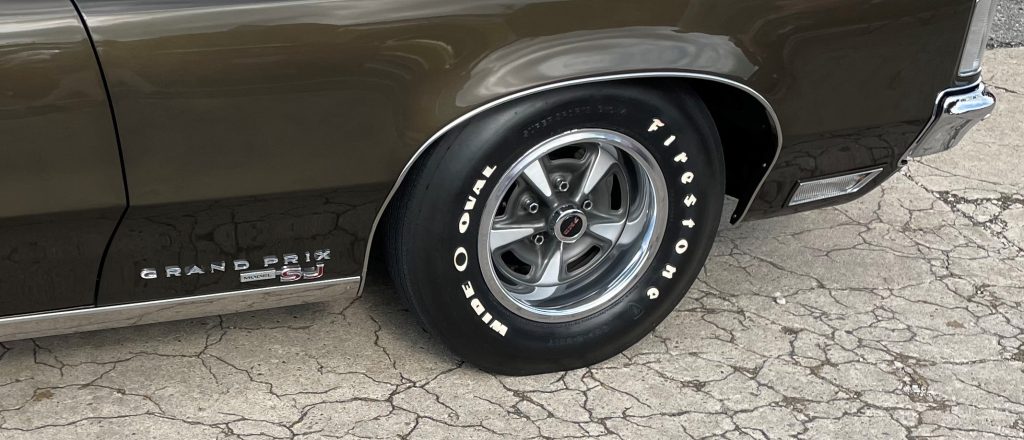
The particular Grand Prix SJ we spotted is owned by Scott Mancini, a diehard Grand Prix fan who’s had plenty of these cars in the past.
“I’ve had many of them, but this is the best one,” Mancini quips as he gestures to the mere 13,000 miles on the odometer.
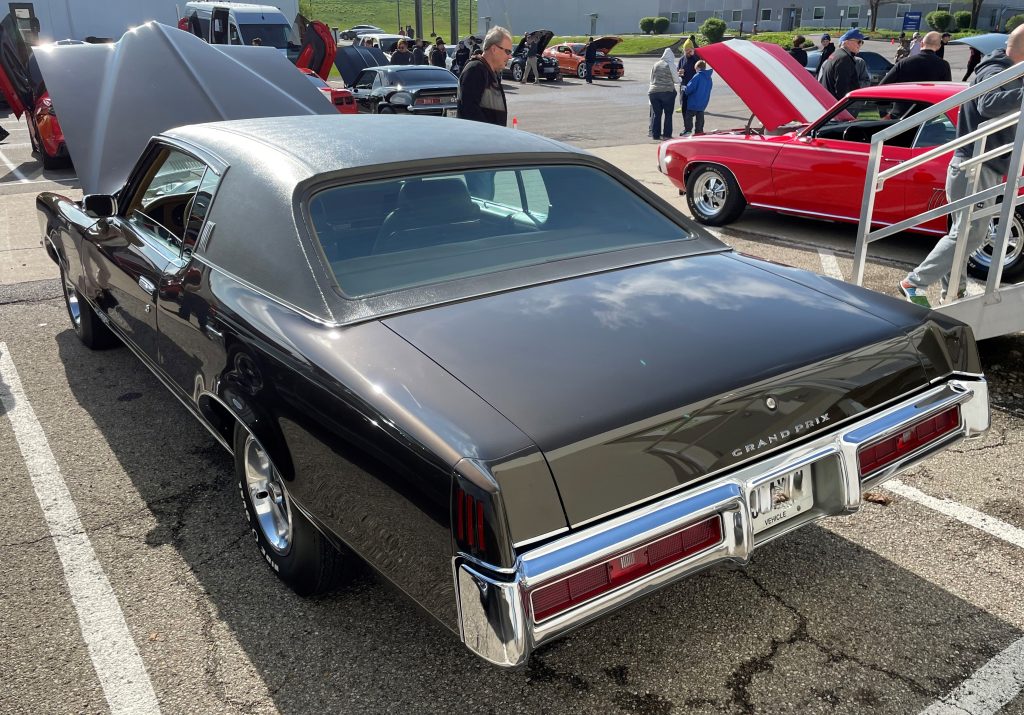
Mancini bought the car in 2016 from the original owners in Pittsburgh, Pennsylvania, who had kept it stunningly clean for decades. “This car sat in the garage on jack stands from 1986 to 2016, never started,” he smiles.
“The only things that’d ever been really changed were the tires and the battery.”
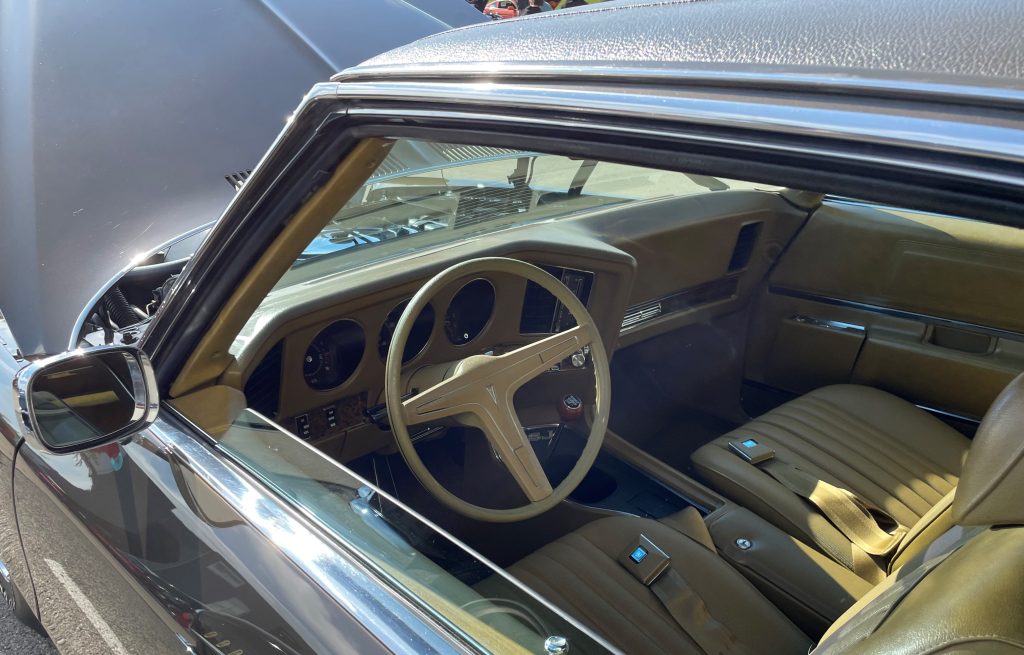
In Mancini’s possession, the car continues to be well cared for, and he’s making only minor updates to maintain the car’s originality. “I replaced the nylon gear in the timing chain, had the radiator re-cored, and that’s about it.”
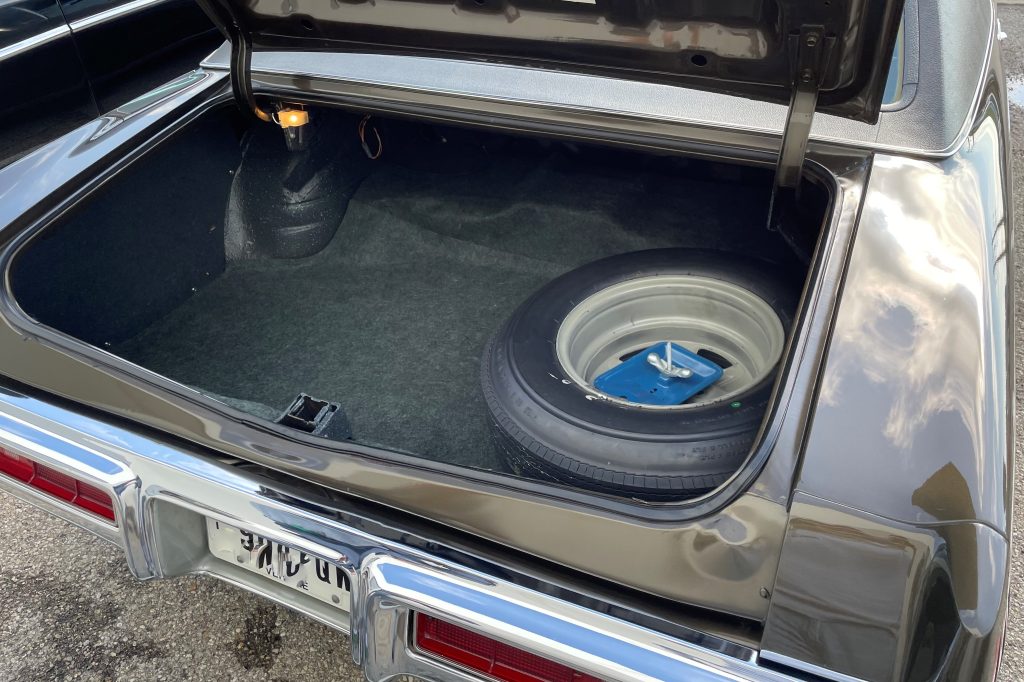
While this particular Grand Prix Mancini drove to the show was a standard SJ model, he tells us that the he’s got another one resting in his garage too—a coveted four-speed 1969 Grand Prix SJ H.O.
We alluded to the High Output model earlier, but checking that “SJ H.O.” box on the options sheet got you the 390 horsepower 428 V8, up 20 ponies from the 370 hp 428 that came with the standard SJ trim seen here.
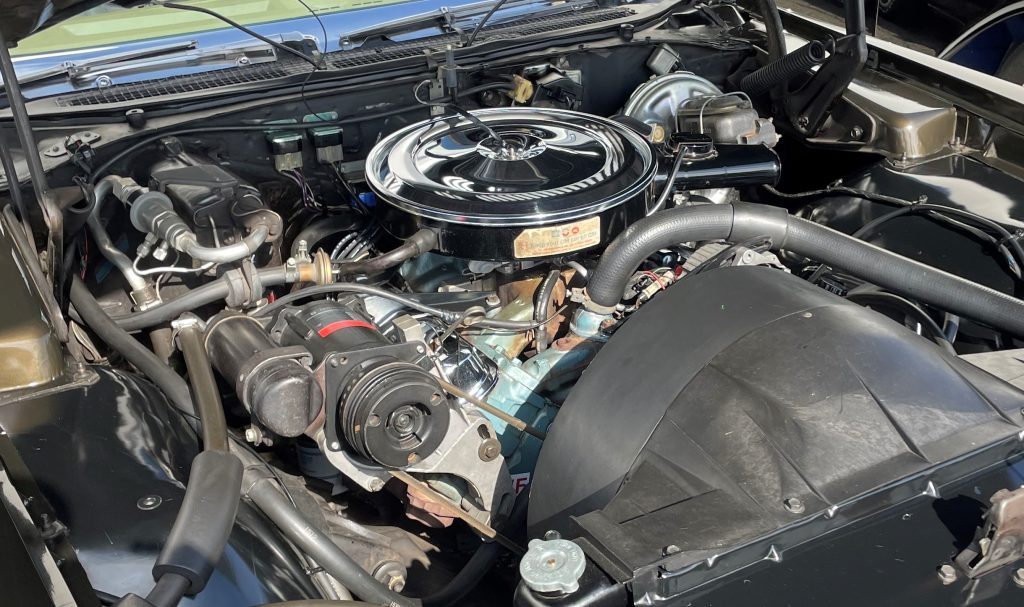
Speaking of engines, in 1970 the fire-breathing 455ci powerplant was added to the Grand Prix SJ.
But by 1975, performance had taken a back seat to luxury and a new “LJ” model slotted above the SJ. The Model J, SJ, and LJ hierarchy endured until the SJ designation was replaced by the Brougham trim in 1981—the LJ name would last until 1983.
And in 1988, the Grand Prix switched to GM’s front-wheel drive W-body, where it would remain until Pontiac was shuttered in 2010.
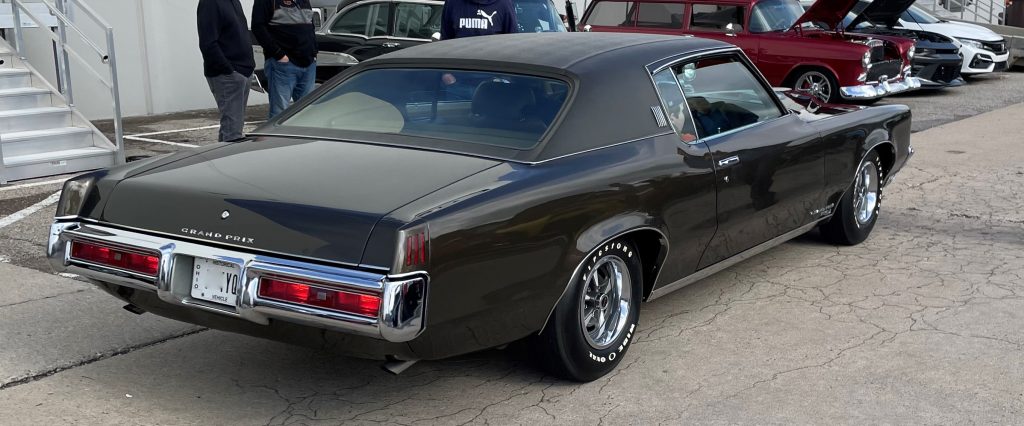

I am looking for a 69-72 Grand Prix. Preferably triple black and would love a four speed but I know they are rare. Let me know if anything comes up for sale. Tim Knapp
I have a 1970 Blue 4speed Geand Prix
I’m interested in the Pontiac gp
I have a 1969 Grand Prix model J it is not a Mattick but reasonably priced, 5500 bucks, black car, white interior looks like it used to be green at one time 479-263-9444 Lonnie
I had a 1970 with a 455, it was a beast.
I picked up a 69 Factory 4-speed a few years ago car is loaded with options. It runs fine can be driven but needs Total Restoration, all the parts are there. If interested look on the 69 70 Pontiac website the build sheet is there. I have too many projects I will sell the car.
Where are you located? I may be interested in that 4 speed grand prick
Do u have a sell price in mind? You said it needed restoration. Is it bad rusted ?
Where u from?
Hey Skip … Is that 4-speed 69 Pontiac GP still vailable? It would look great beside my 69 Pontiac GTO| 🙂
Interested in the gp…..please reply
Where and when did Pontiac go astray? This car is magnificent. Thanks so much for showcasing it. Totally forgot these even existed.
I would like a 69 J model with the 400 CI 350 HP. Preferably red with white interior in good condition.
We owned two Grand Prixs – 1969 like above and a 1972 with sea blue exterior and white interior. Both had white vinyl roofs and 400 CI automatics.
The 69 was the fastest but the 72 sounded the toughest.
If anyone has a nice condition 69 or 72 for sale please contact me.
Fred
I’m just reading this as of February 27, 2024. Curious if you found your Grand Prix that you desired I do have the holy Grail in my possession in my garage as we speak 1969 Pontiac all Pontiac historical society documented window sticker black on black on black full options black leather, electric seats 428 turbo 400 gorgeous car showing 48,000 miles Survivor runs and drives like new. Let me know if you haveany interest. The car has not been listed for sale and is not for sale anywhere at this point, here’s my email cysscokid@gmail.com
My name is Chris
Hello, I’ve always loved this car, my father had one.when I was a kid, I’d always love this car, and wish I could found me to rebuild or find me one that’s In descent shale, you have a Beautiful car.
I had a 69 J, clocked at 147 on radar, wasn’t the fastest I had it though! Cop made me slow down, luckily he was a friend, I wouldn’t have been able to afford the ticket…or increase in insurance! I never lost a race in that car, had the 400, loved the slap-stick tranny! Sure wish I could find another! I’d rather the 72 trunk style but there’s no horsepower there! Problem is people think these cars are worth more than they are, especially for the condition most are in.
I always understood the “S” in the SJ designation referred to the “SUPER” that earlier Grand Prix SuperJ’s were known as. I may be wrong there… Standard 1969 SJ engine was the 370 HP 428. There was a 400 optional, and if I remember correctly, it was essentially the Ram Air II engine. The 390 HP 428 HO was optional, and only with 4-speed and without AC.
Car still available?
is the 69 still for sale how much